Prof. Dr. Peter Mertens
Department of Nephrology, Diabetology and Endocrinology
Prof. Dr. Dimitrios Mougiakakos
Department of Hematology and Oncology
Prof. Dr. Christoph Lohmann
Department of Orthopedics
From the 26th to the 28th of October 2017, the Health Campus Immunology, Infectiology and Inflammation (GC-I³) informed visitors in the Allee-Center Magdeburg about the causes and treatments of various diseases, especially metabolic syndrome and cancer. Many visitors used the chance to learn more about these exciting topics and talked with the doctors and staff of the GC-I³. Almost everyone who came by took the opportunity to visit the highlight of the exhibition, a larger than live, walkthrough model of the intestines. While going through it, members of the Department of Gastroenterology, Hepatology and Infectiology taught them about diseases in the intestines and liver as well as about preventative measures to take against intestinal cancer.
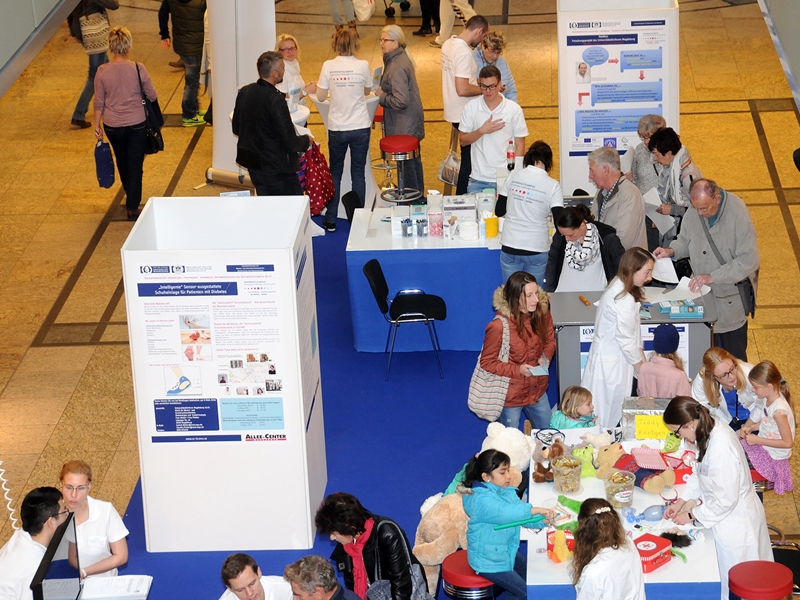 Blick von oben (Bild 1 von 25) » Vorwärts
Blick von oben (Bild 1 von 25) » Vorwärts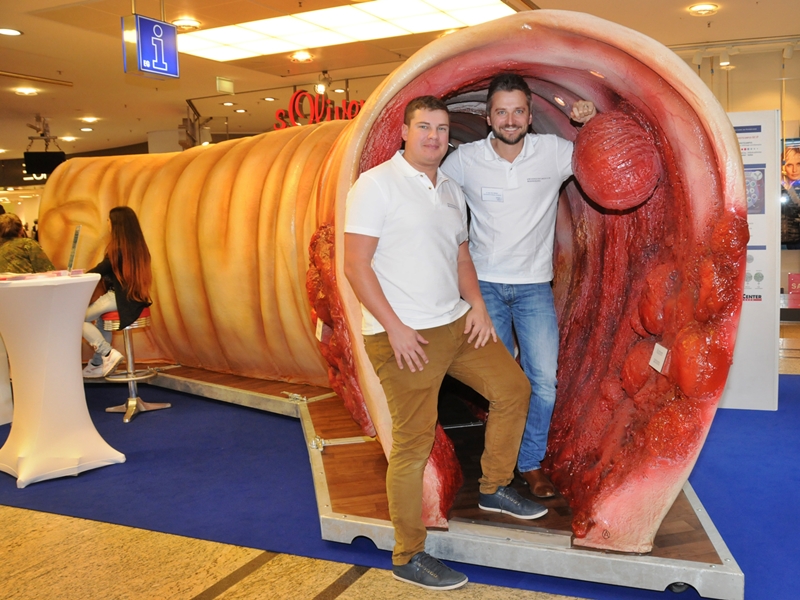 « ZurückKardiologen im Darm (Bild 2 von 25) » Vorwärts
« ZurückKardiologen im Darm (Bild 2 von 25) » Vorwärts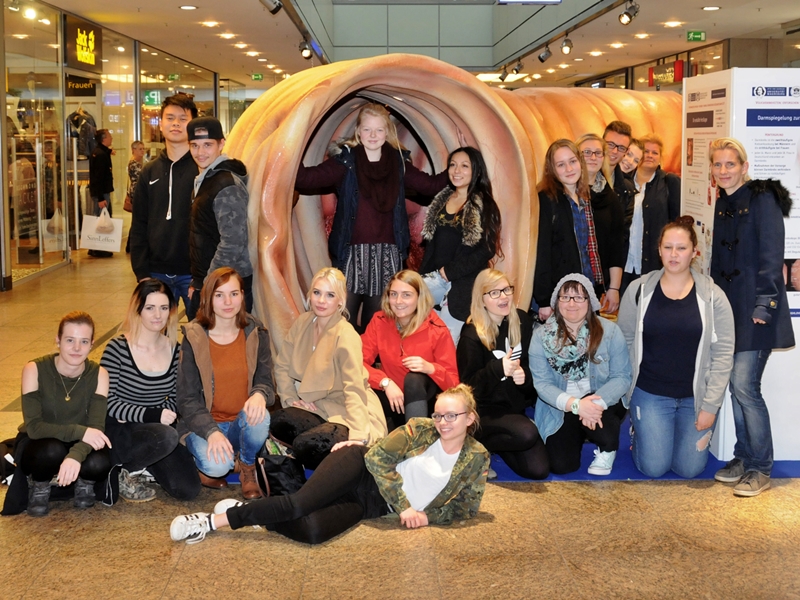 « ZurückZahlreiche Schülerinnen und Schüler nutzten die Gelegenheit den Darm zu erkunden (Bild 3 von 25) » Vorwärts
« ZurückZahlreiche Schülerinnen und Schüler nutzten die Gelegenheit den Darm zu erkunden (Bild 3 von 25) » Vorwärts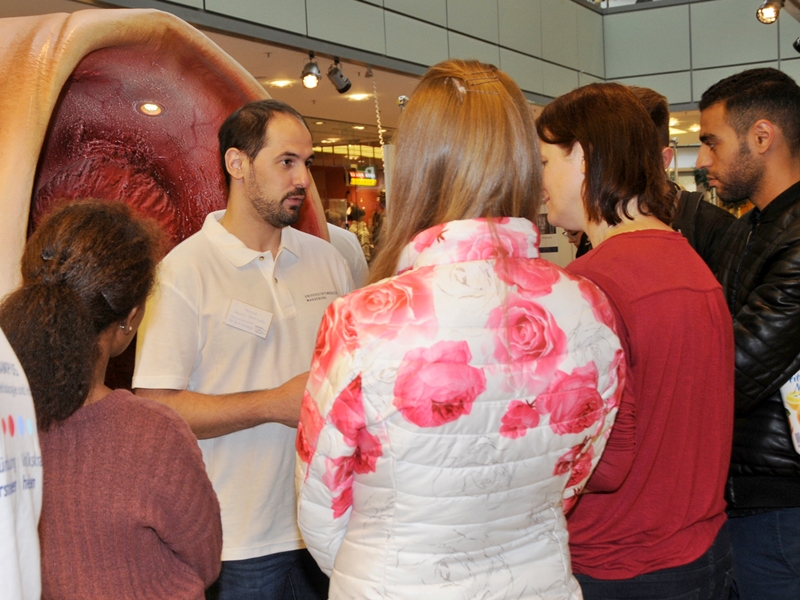 « ZurückErklärungen zur Darmgesundheit (Bild 4 von 25) » Vorwärts
« ZurückErklärungen zur Darmgesundheit (Bild 4 von 25) » Vorwärts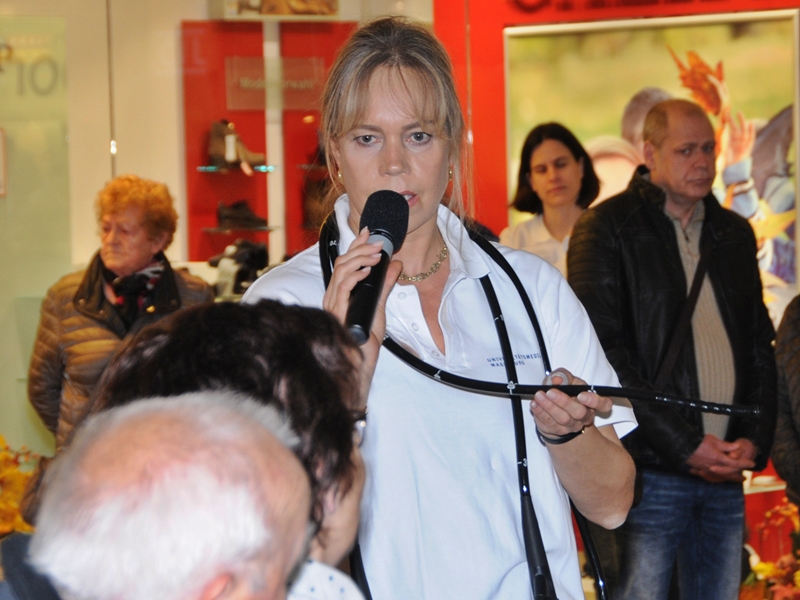 « ZurückVortrag zur Darmkrebsvorsorge (Bild 5 von 25) » Vorwärts
« ZurückVortrag zur Darmkrebsvorsorge (Bild 5 von 25) » Vorwärts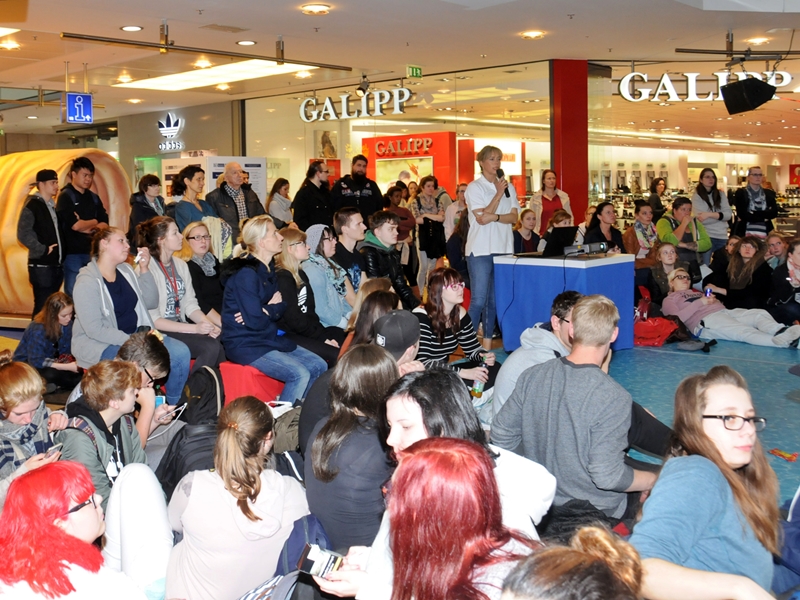 « ZurückVortrag zur Fettleber (Bild 6 von 25) » Vorwärts
« ZurückVortrag zur Fettleber (Bild 6 von 25) » Vorwärts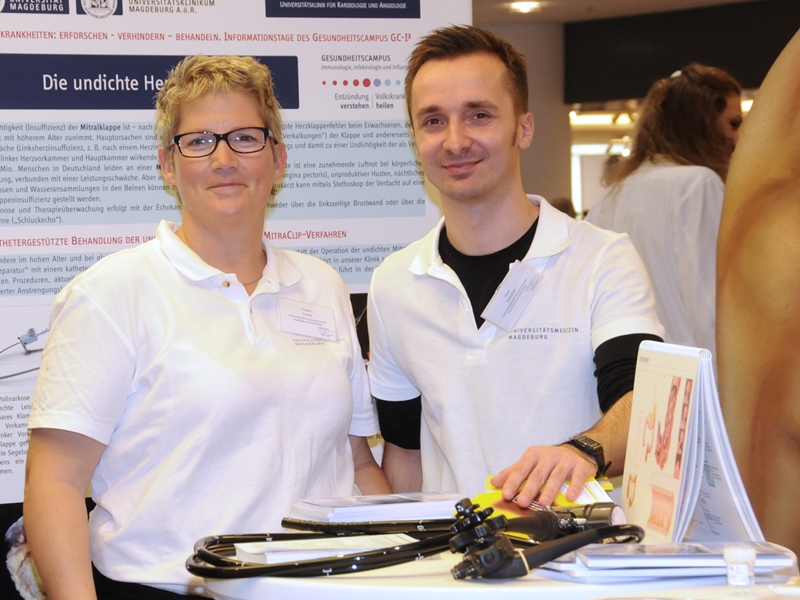 « ZurückDie Gastroenterologie nahm vielen Besuchern die Angst vor der Darmspiegelung (Bild 7 von 25) » Vorwärts
« ZurückDie Gastroenterologie nahm vielen Besuchern die Angst vor der Darmspiegelung (Bild 7 von 25) » Vorwärts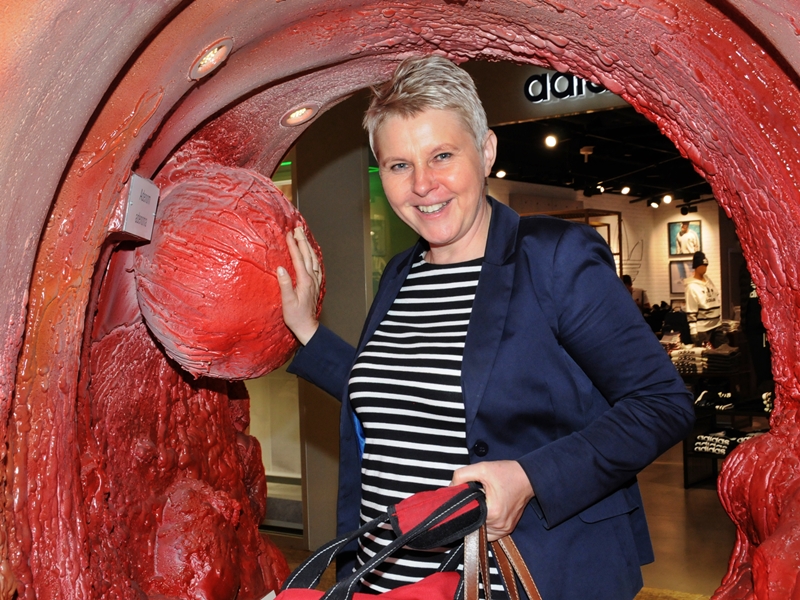 « ZurückAuf Tuchfühlung mit dem Darmmodell (Bild 8 von 25) » Vorwärts
« ZurückAuf Tuchfühlung mit dem Darmmodell (Bild 8 von 25) » Vorwärts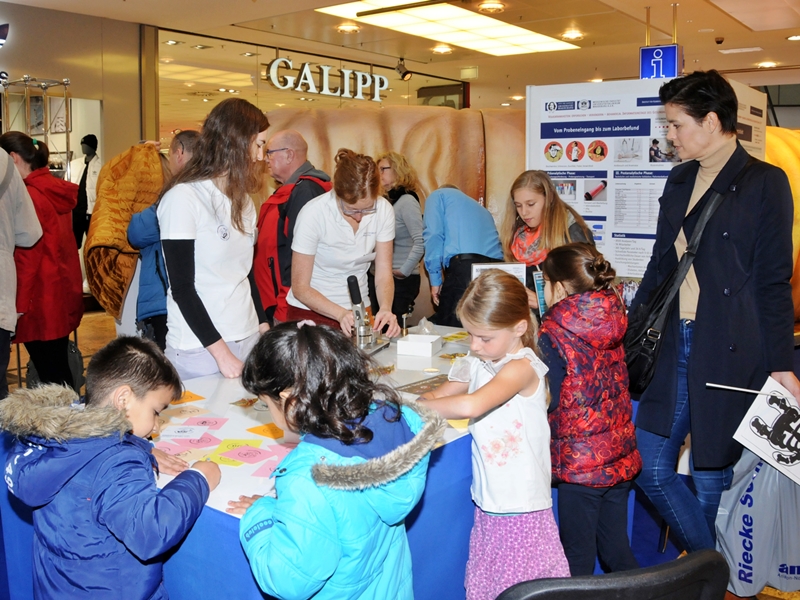 « ZurückAndrang in der Malstraße (Bild 9 von 25) » Vorwärts
« ZurückAndrang in der Malstraße (Bild 9 von 25) » Vorwärts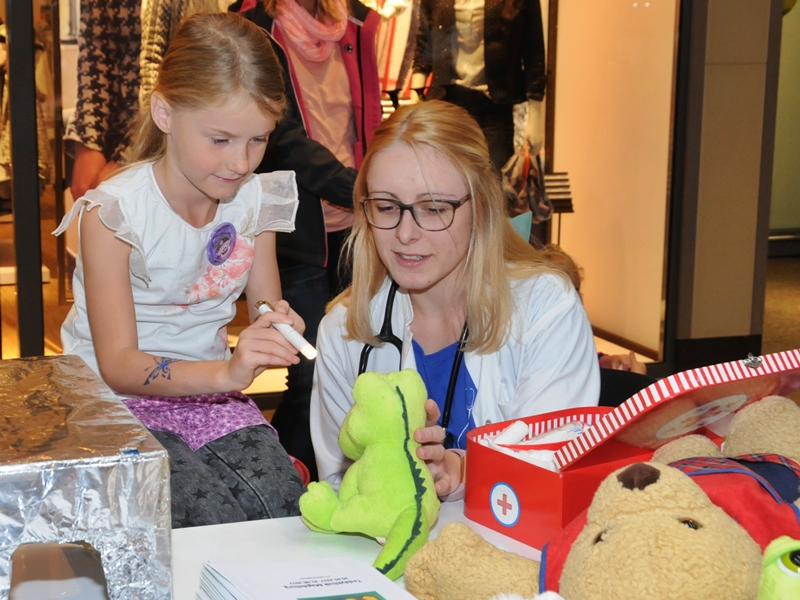 « ZurückEin Drache wird untersucht! (Bild 10 von 25) » Vorwärts
« ZurückEin Drache wird untersucht! (Bild 10 von 25) » Vorwärts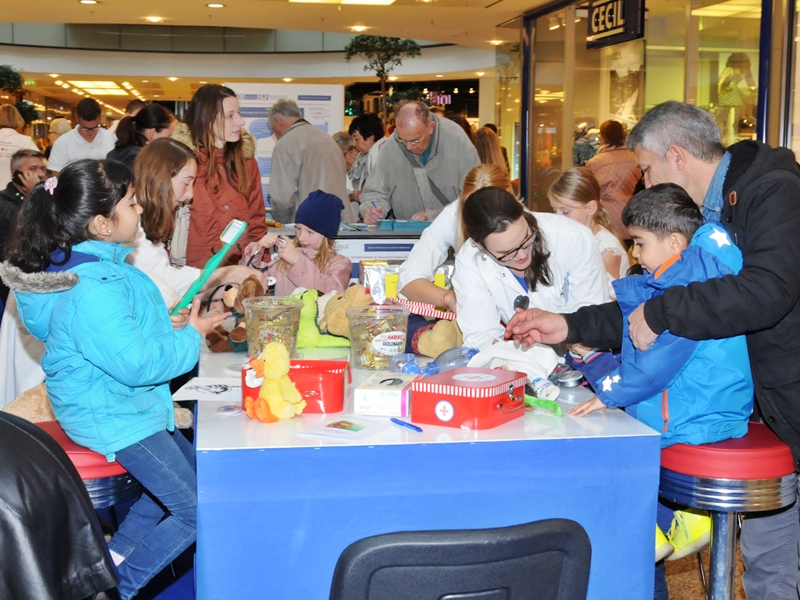 « ZurückDie Teddyklinik war wie immer sehr beliebt (Bild 11 von 25) » Vorwärts
« ZurückDie Teddyklinik war wie immer sehr beliebt (Bild 11 von 25) » Vorwärts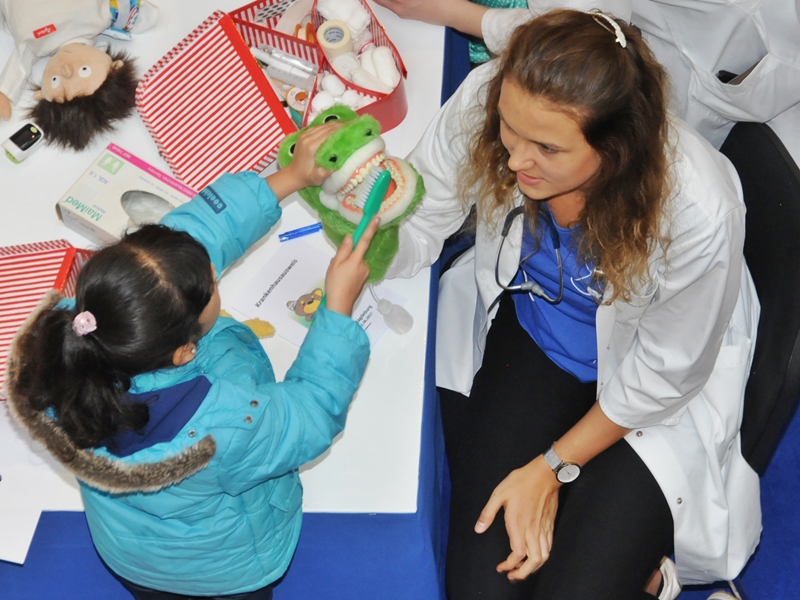 « ZurückAuch Krokodile müssen Zähne putzen (Bild 12 von 25) » Vorwärts
« ZurückAuch Krokodile müssen Zähne putzen (Bild 12 von 25) » Vorwärts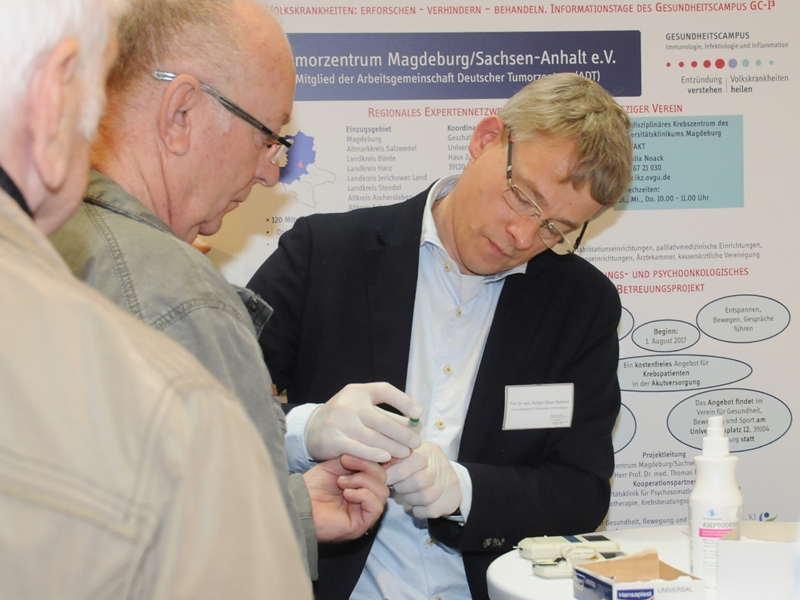 « ZurückKennen Sie Ihren Cholesterin-Spiegel? (Bild 13 von 25) » Vorwärts
« ZurückKennen Sie Ihren Cholesterin-Spiegel? (Bild 13 von 25) » Vorwärts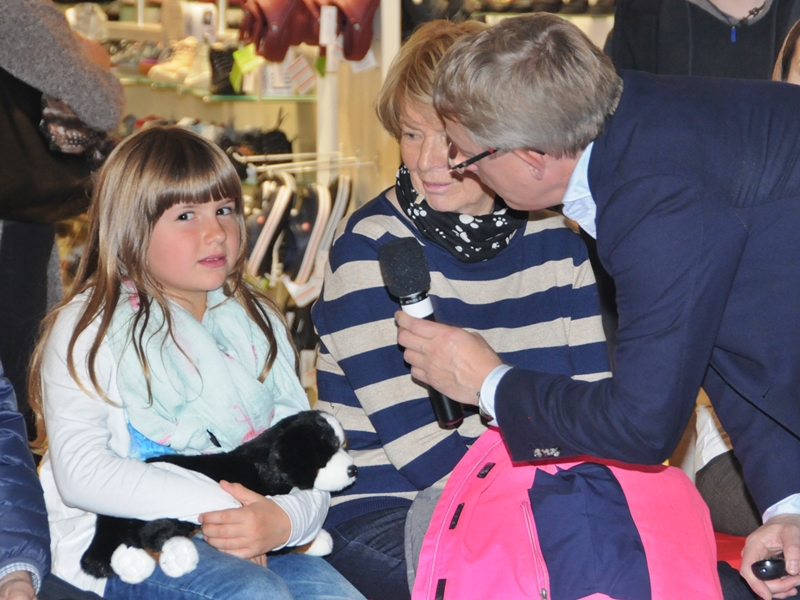 « ZurückAuch diese junge Dame interessierte sich für das Herz (Bild 14 von 25) » Vorwärts
« ZurückAuch diese junge Dame interessierte sich für das Herz (Bild 14 von 25) » Vorwärts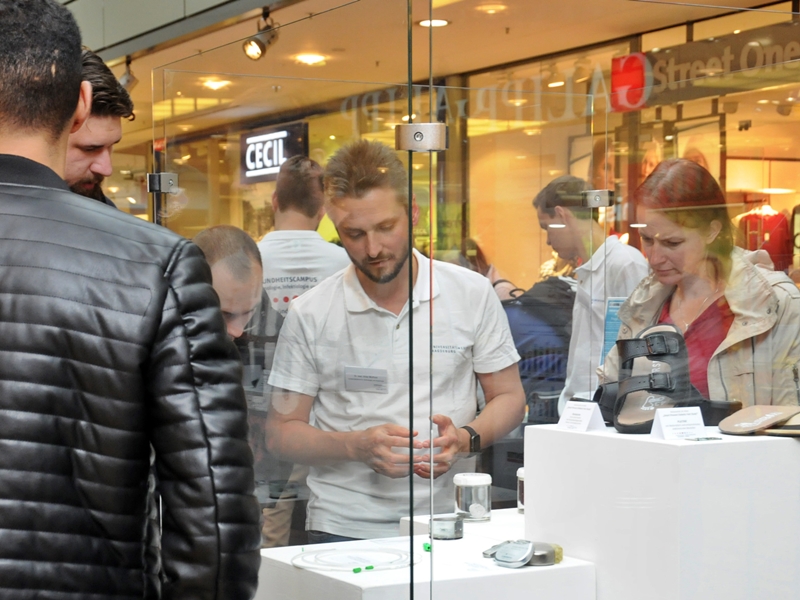 « ZurückSchrittmacher und künstlichen Herzklappen (Bild 15 von 25) » Vorwärts
« ZurückSchrittmacher und künstlichen Herzklappen (Bild 15 von 25) » Vorwärts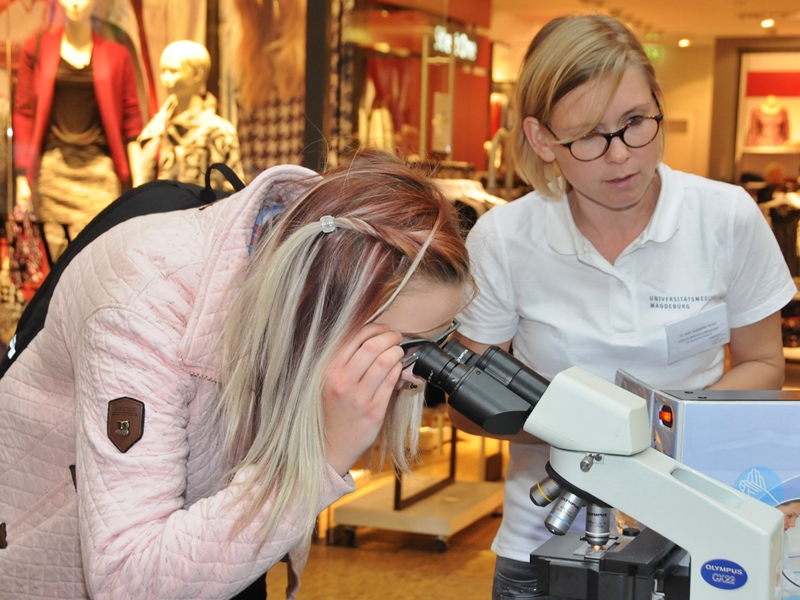 « ZurückWie sieht eine Kopflaus in Nahaufnahme aus - die Krankenhaushygiene (Bild 16 von 25) » Vorwärts
« ZurückWie sieht eine Kopflaus in Nahaufnahme aus - die Krankenhaushygiene (Bild 16 von 25) » Vorwärts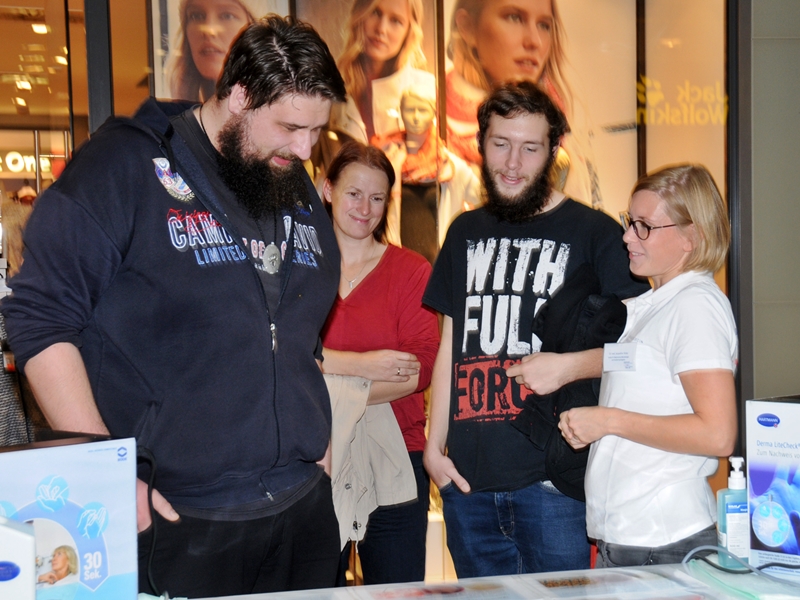 « ZurückSind die Hände auch wirklich sauber? (Bild 17 von 25) » Vorwärts
« ZurückSind die Hände auch wirklich sauber? (Bild 17 von 25) » Vorwärts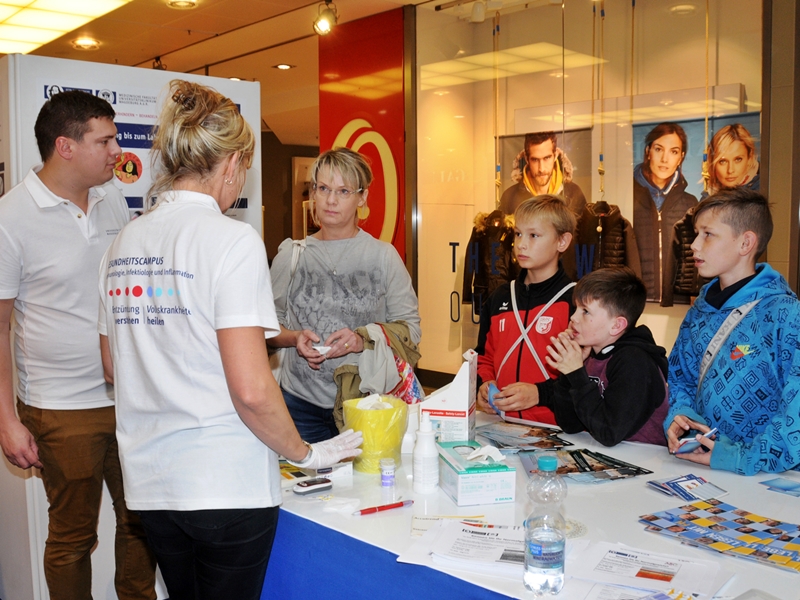 « ZurückDie Abklatschuntersuchungen waren auch bei der Jugend beliebt (Bild 18 von 25) » Vorwärts
« ZurückDie Abklatschuntersuchungen waren auch bei der Jugend beliebt (Bild 18 von 25) » Vorwärts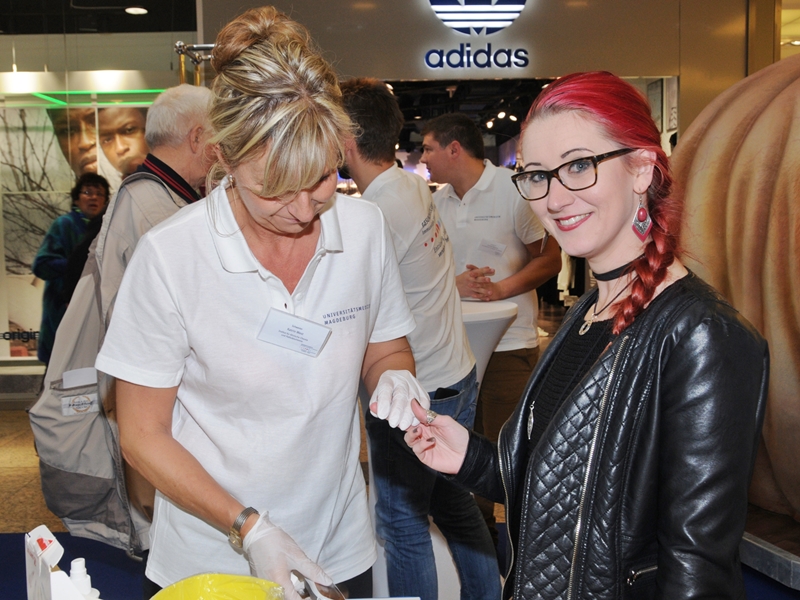 « ZurückDie Lipidambulanz... (Bild 19 von 25) » Vorwärts
« ZurückDie Lipidambulanz... (Bild 19 von 25) » Vorwärts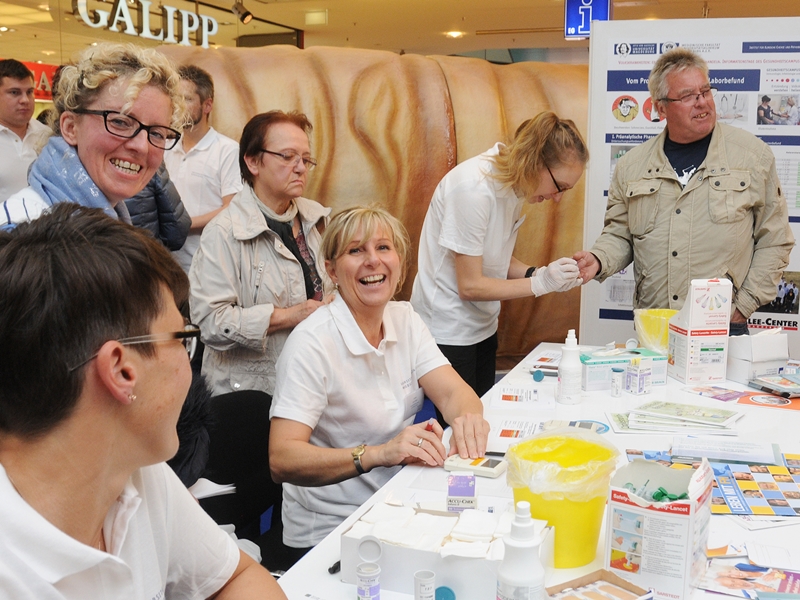 « Zurück...wie immer gut gelaunt bei der Arbeit! (Bild 20 von 25) » Vorwärts
« Zurück...wie immer gut gelaunt bei der Arbeit! (Bild 20 von 25) » Vorwärts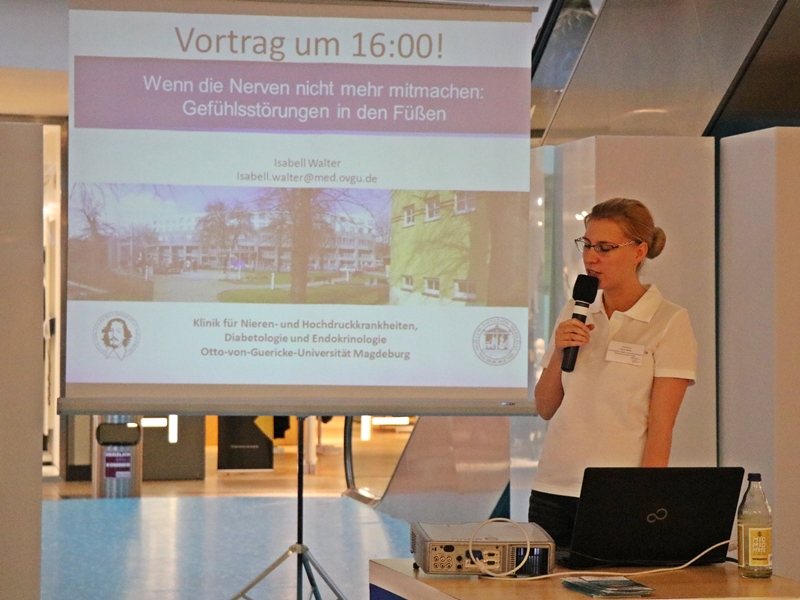 « ZurückVortrag zu Gefühlsstörungen in den Füßen (Bild 21 von 25) » Vorwärts
« ZurückVortrag zu Gefühlsstörungen in den Füßen (Bild 21 von 25) » Vorwärts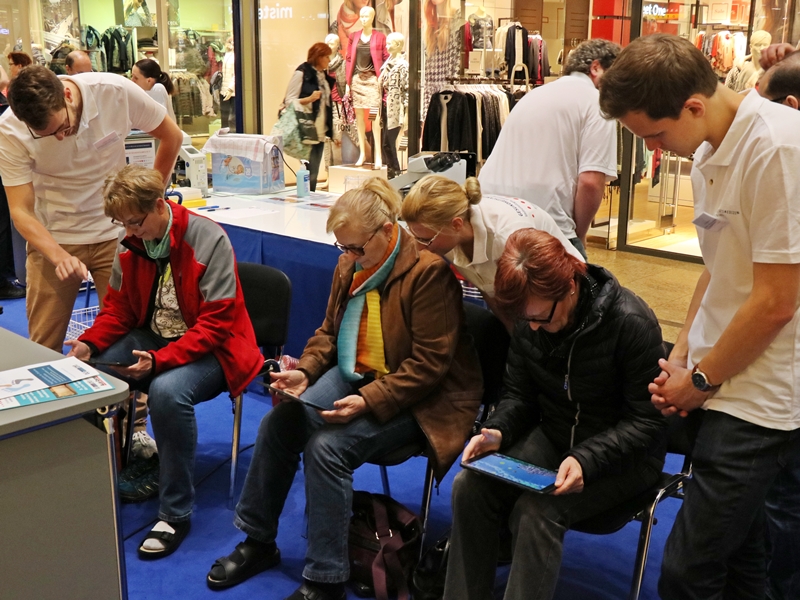 « ZurückDie Spiele zur Erhebung des Nervenstatus... (Bild 22 von 25) » Vorwärts
« ZurückDie Spiele zur Erhebung des Nervenstatus... (Bild 22 von 25) » Vorwärts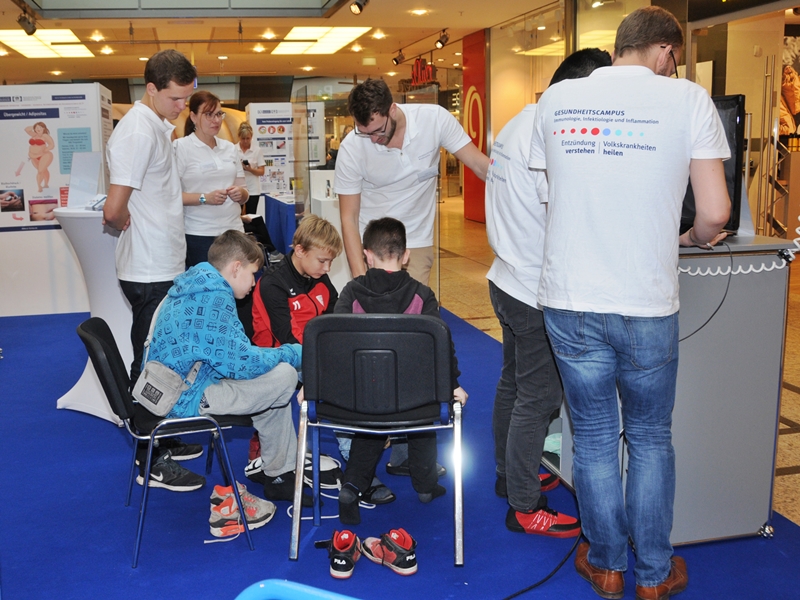 « Zurück...waren bei allen Altersklassen beliebt! (Bild 23 von 25) » Vorwärts
« Zurück...waren bei allen Altersklassen beliebt! (Bild 23 von 25) » Vorwärts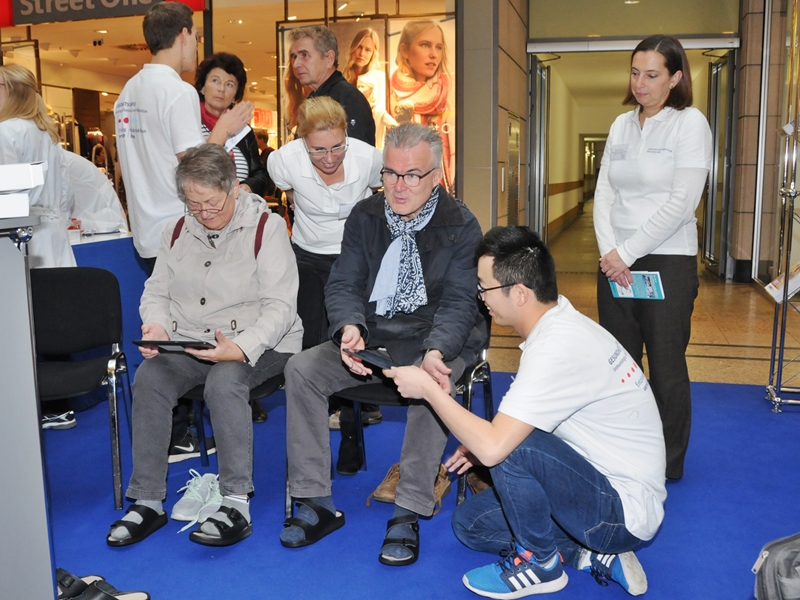 « ZurückDie intelligenten Einlegesohlen werden getestet (Bild 24 von 25) » Vorwärts
« ZurückDie intelligenten Einlegesohlen werden getestet (Bild 24 von 25) » Vorwärts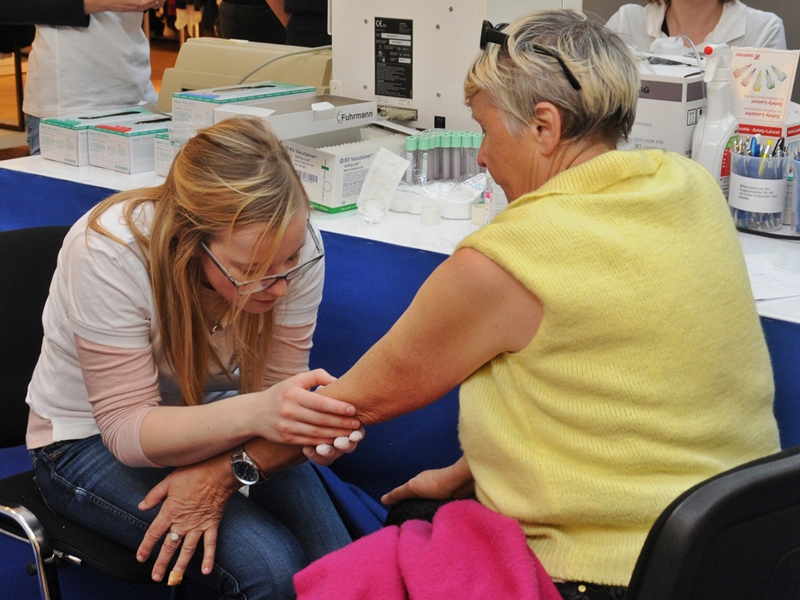 « ZurückEine mutige Probandin für die TeleBlut-Studie (Bild 25 von 25)
« ZurückEine mutige Probandin für die TeleBlut-Studie (Bild 25 von 25) Cancer is a term that everyone has heard, but many people are not familiar with metabolic syndrome. But, according to estimates from the International Diabetes Federation, 20 to 25 % of the adult population worldwide has this disease, and in Germany these numbers are even higher, ranging from 25 to 30 %. This disease consists of the combination of various factors including overweight, high blood pressure, high levels of blood fats (triglycerides) and high levels of blood sugar. Metabolic syndrome is an important risk factor for diseases of the heart and circulatory system and increases the risk of cancer. Visitors were able to learn about these topics at the stand set up by the Tumor Center for Magdeburg/Sachsen-Anhalt e.V.
Another magnet for the public was the chance to take a free cholesterol and blood sugar test, calculate their risk of a heart attack and to learn about weight loss through the Active Body Control Program. Many visitors also participated in the TeleBlut study from the Clinic of Hematology and Oncology, accompanied by information about donating blood and stem cells. On Saturday, some visitors registered themselves as stem cell donators.
The Department of Medical Microbiology and Hospital Hygiene had an impressive demonstration of the difference between clean and clinically clean: the visitors were able to test how germ infested daily objects such as watches, rings and phones are and learn how to properly hygienically disinfect their hands. Here are the results of the study.
The „intelligent shoe soles“ from the Clinic of Nephrology and Hypertension, Diabetes and Endocrinology were also a topic of interest for many visitors. These were developed for diabetics in combination with computer games which were controlled with special shoe soles to determine the status of the nerves and were thoroughly tested by people of all ages.
While the adults learned about health topics, the kids had the chance to color in immune cells and take them home on a sticker. They could also go to the Teddy Clinic and learn about the watchtowers of the immune police.
The stands and interactive exhibits were supported by short lectures on health topics such as diabetes and diseases affecting the liver, intestines and the circulatory system. The flyer with all of the information on the Information days can be found here.
The Volksstimme Magdeburg also reported this successful event, which certainly contributed to the mass of visitors on Satudardy!
Photos: Melitta Dybiona und Antao Ming.
Prof. Dr. Peter Mertens
Department of Nephrology, Diabetology and Endocrinology
Prof. Dr. Dimitrios Mougiakakos
Department of Hematology and Oncology
Prof. Dr. Christoph Lohmann
Department of Orthopedics
Last Modification: 25.11.2020 - Contact Person: